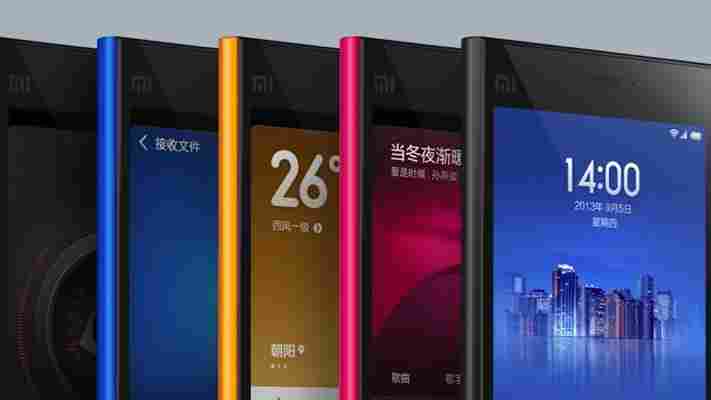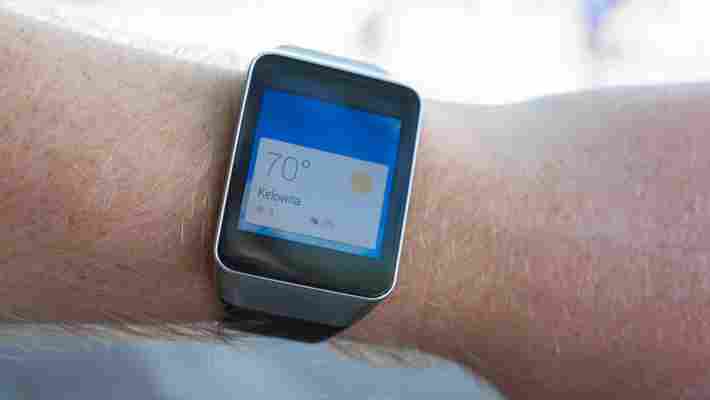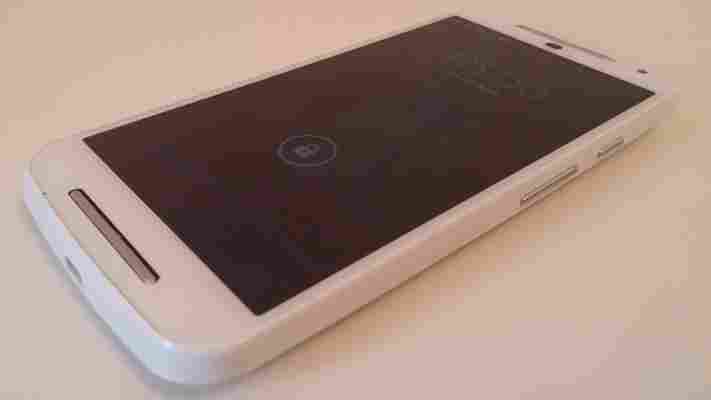In an indication of the rising popularity of Xiaomi devices, the Chinese smartphone manufacturer has announced that it shipped 11 million smartphones in the first quarter of this year.

For comparison, Xiaomi sold 18.7 million smartphones in 2013, up 160 percent from a year earlier and more than its initial target of 15 million devices . Xiaomi CEO Lei Jun earlier stated that the company expects to ship 40 million smartphones for 2014, but says now that it could reach 60 million units instead. He also expects Xiaomi to ship 100 million smartphones next year.
The rise in shipments is no doubt being aided by Xiaomi’s global expansion — the red-hot smartphone maker quietly expanded sales into Hong Kong and Taiwan, and more recently took a first step outside of Greater China by moving into Singapore . The company’s international ambitions have been driven by high-profile former Google VP Hugo Barra — and now VP for Xiaomi Global. There are plans to bring Xiaomi devices into other Southeast Asian markets next, and there are also indications that the company is looking into India , as well as Latin America .
Lei didn’t reveal any specific sales figures for the first quarter, but did say that revenue was up by 150 percent from the same quarter a year earlier — and if the trend continues, the company could hit CNY80 billion ($12.9 billion) in sales for the full year of 2014. He noted though, that a more plausible milestone would be CNY70 billion ($11.2 billion). The figure isn’t indicative of profit, but it is still remarkable considering that Xiaomi released its first device as recently as 2011.
As Xiaomi continues its march overseas, it looks set to perform beyond expectations in 2014 — given that its handsets will probably be in high demand by price-conscious customers in emerging markets. Xiaomi has made a name for itself smartphones packed with high-end specs but at lower prices compared to other Android phone manufacturers including Samsung and HTC. For example, in Singapore, the budget Redmi costs just S$169 ($134), while Xiaomi’s flagship Mi 3 has a price tag of S$419 ($332) unlocked.
Note: This story erroneously stated Xiaomi was expecting to ship 1 billion smartphones next year. It’s 100 million instead. The story has been updated to reflect that.
Headline image via Xiaomi
Samsung Gear Live review: Finally a smartwatch you could wear every day
For what seems like forever, companies have been telling us that wearables are here to stay and trying to sell them to the public in all types of crazy forms but nothing has really stuck. We’ve seen everything from fitness bands to smartwatches but nobody has managed to convince us that we need to wear something on our wrists all the time.

That may have finally changed when Google announced its Android Wear platform last week at I/O, the company’s annual developer event. I saw the company unveil the platform first hand and have spent the week using the Gear Live as I travel around North America.
My colleague Roberto wrote last week when he tried the Gear Live for the first time that “the form factor is not only comfortable, it looks good” and I agree fully. The device looks much less garish than the LG G Watch and is surprisingly nice to wear on the wrist; it’s not too big or too heavy. This said, it looks ridiculously large on smaller female wrists (but can still fit comfortably as long as you don’t mind the size).
Android Wear is Google’s take on smartwatches and is a cut-down version of Android 4.4 running on your wrist. The watch connects to Android phones only via an app (aptly named Android Wear) that manages notifications and other interactions between the phone and your watch.
The home screen primarily presents a beautifully simple set of cards that the software believes is important to you; it’s Google Now on your wrist. Throughout the day, it presents cards such as the weather, the currency conversion/time back home (if you’re travelling), stocks, sports scores and other data as it believes it becomes relevant. On top of this, notifications also appear as cards and are grouped by application.
Google Now is impressive software on the phone but I never found it particularly useful as I had to intentionally look at it to see what was up. Now that it’s on my wrist, however, it feels like the software has finally found its natural home. Having the prompts on your wrist instead of your pocket is extremely compelling and it’s amazing to be able to see at a glance with no effort that your flight is delayed or what the soccer score is.
Combining Google Now with the company’s powerful voice search makes it even sweeter and it’s surprisingly more useful than I ever imagined. Being able to quickly search things like “how many meters are there in a foot” or “what is the capital of Canada” with a single tap is incredibly useful and avoids you needing to pull out your phone and tap out the search. Why do that when you can get the answer with surprising accuracy right on your arm?
But that’s not the only great part; app notifications that appear on your phone also appear on your watch, giving you a powerful notification centre right on your arm. As I was travelling, this is invaluable as there’s so little time to keep up with everything, so I could just quickly read emails and tweets then dismiss them. At home, it’ll be great for when I’m out and about but also in meetings or with friends as it’s less intrusive than pulling out your phone.
No wearable would be complete without fitness tracking and Wear is no exception with step tracking built right into Google Fit, the company’s answer to Apple’s HealthKit. The Gear Live is also unique as it sports a heart rate monitor, so you’re able to measure your pulse in a few seconds. It works surprisingly well, but frustratingly you have to stay quite still and quiet to get a measurement.
Developers can also build their applications with Android Wear in mind and while these are limited in number right now, there are some compelling preview apps already available. Google Maps already supports Android Wear and shows directions right on your wrist. It’s pretty useful in the car, but even more compelling if you’re on a scooter or motorbike and need to know where to turn next.
Other applications such as Lyft are already on Wear as well and I was able to order a car by just saying “OK Google, order me a cab” which launched the Lyft app, ordered a cab and gave me updates on how far away it was. As more of these types of applications are added, Android Wear will become more compelling but right now it’s a little basic.
This isn’t to say that the Gear Live is without issues, though. Battery life is less than what I had hoped, with two days being the furthest I could stretch it. I don’t really mind too much as it’s easy enough to just throw on the charger at night but would much prefer it lasted three to four days.
Notifications are really useful on the watch but sometimes it’s an absolute bombardment. Perhaps you published a tweet that got a lot of attention; your watch will now be blowing up non-stop until you go to your phone and disable notifications from the app or uncheck it in the Wear app.
The watch does group notifications by app nicely but there’s no quick way to snooze a single app temporarily; you can only mute everything. I only ran into this once or twice, but when it happens it’s a little overwhelming. The nice part is that Wear actually respects your phone’s notification settings, so if you uncheck ‘vibrate’ on Twitter’s settings then the watch won’t vibrate but will just light up with notifications instead.
The other problem with the Gear Live itself is a little bit bigger. It’s almost completely useless on a sunny day. I often struggled to use the watch on sunny days and found myself seeking shade, cupping my wrist and trying to create a shadow to see the screen. You can generally make out what’s going on, but you have to be really looking for it, unlike a traditional watch. Not a great start, since many of us spend most of our spare time out and about.
Android Wear is also a little rough around the edges at this stage with some apps crashing or unusable, but it’s to be expected since these devices haven’t even hit the market yet. During the first week with the device, Google pushed two over the air updates which fixed a handful of the issues and crashes I was having anyway, so the company is serious about getting this right.
I’m no stranger to wearables, having purchased a Fitbit Flex the day it came out and enthusiastically wearing it for some weeks before becoming bored and frustrated with the device and eventually abandoning it. This is not so with the Gear Live.
The power of having a notification centre on your wrist combined with intelligent information being suggested and incredibly accurate voice search is so good that I have worn the Galaxy Gear Live every day since I/O. All of these things on their own might seem like gimmicks but combined made Android Wear win me over.
Unfortunately for Samsung there’s an elephant in the room; the Moto 360. Excitement for the device was palpable at I/O and I even managed to get some hands on time with it and quickly fell in love with the form factor. The Gear Live is nice but not as nice as the Moto 360 and the screen on Motorola’s watch appeared much better when I used it. Of course, there’s the LG G Watch too. That’s already available and we’ll have a review online soon.
Samsung’s finally got the right combination of form factor and software with Android Wear, but with the sub-par screen and Motorola’s impressive competing watch on the horizon I can’t whole-heartedly recommend buying the Gear Live right now. If you’re desperate to get your hands on a decent smartwatch right now, however, the Gear Live is the choice to make.
The Samsung Gear Live costs $199 and is available to preorder now from Google Play . It ships July 7.
Don’t miss: 6 of the first third-party Android Wear apps
Hands-on with Motorola’s new Moto G: A delicate balance of price and performance
Motorola today lifted the lid on revamped versions of its Moto G smartphone, which it says is its best-selling smartphone of all time, but do the incremental additions really make much of a difference to the handset or is it just more of the same ?

We spent a little hands-on time with the device to find out.
OK, first things first, if you’ve ever seen the original Moto G then the new Moto G looks just like that, except that it’s a little taller and wider to accommodate the larger 5-inch 720p display.
Aside of the screen, it really does look very similar indeed – meaning it keeps the non-glossy, soft-touch plastic, curved rear casing of its predecessor. That curve isn’t a design choice I particularly like, but it’s not a deal-breaker on this handset.
The increase in screen size also brought a small increase in weight too – a whole 6 grams – up to 149 grams, making just a whisker lighter than Microsoft’s freshly launched mid-range Lumia 830 . Again, it’s not the lightest on the market, but it’s pretty impressive considering its £145 price tag and 5-inch display.
The rear case is removable (a necessity for the accompanying range of different colored shells) and provides access to the dual SIM slots and microSD expansion slot. It’s nice to see this included for launch this time around, although support for cards above 32GB might have been nice.
The speaker, formerly found on the rear, has been moved to the front and has been joined by another, so you now have one above and below the display facing forwards. It’s certainly plenty loud for its size, if not the best listening experience for audiophiles.
The Moto G arrives running an almost stock version of Android, which is a refreshing change from most device makers and positively necessary on devices such as this with a more middling spec list.
Aside of the ‘vanilla’ Android Kit (4.4.4) experience (it will be getting an upgrade to Android L when available too), there’s a non-standard camera UI and a few Motorola specific apps, although most of these aren’t new for this device.
The screen, like the former model, is crisp and sharp – although slightly less sharp than the original due to the increased screen size. While the first-gen Moto G packed 329 ppi (pixels-per-inch), the new Moto G manages 294 ppi. Still, it’s no less responsive than the first and the overall feeling from the OS is one of sprightliness, rather than one that’s about to lag out. Nonetheless, without putting it through more rigorous tests, we’ll have to reserve final opinion.
It’s a similar story with the camera too – the megapixel count has grown from five to eight, but megapixels don’t tell the whole story so we’d need to test it in a few different conditions to get a proper feel for it. That said, from what we did test, it snapped away quickly and didn’t leave me waiting for the focus for too long.
At first glance, those colors look a little on the over-saturated side too.
Mid-range handsets tend to suffer from a number of problems, but in providing a high-quality display, microSD expansion and a pleasingly sparse version of Android, the updated Moto G looks set to continue in the footsteps of the original and sidestep some of the most annoying pitfalls.
Yes, the camera probably isn’t going to be a patch on a Lumia’s and no, there’s no 4G LTE connectivy on board (although the original Moto G 4G is still available), but with a price tag of just $179/£145, compromises have to be made somewhere.
